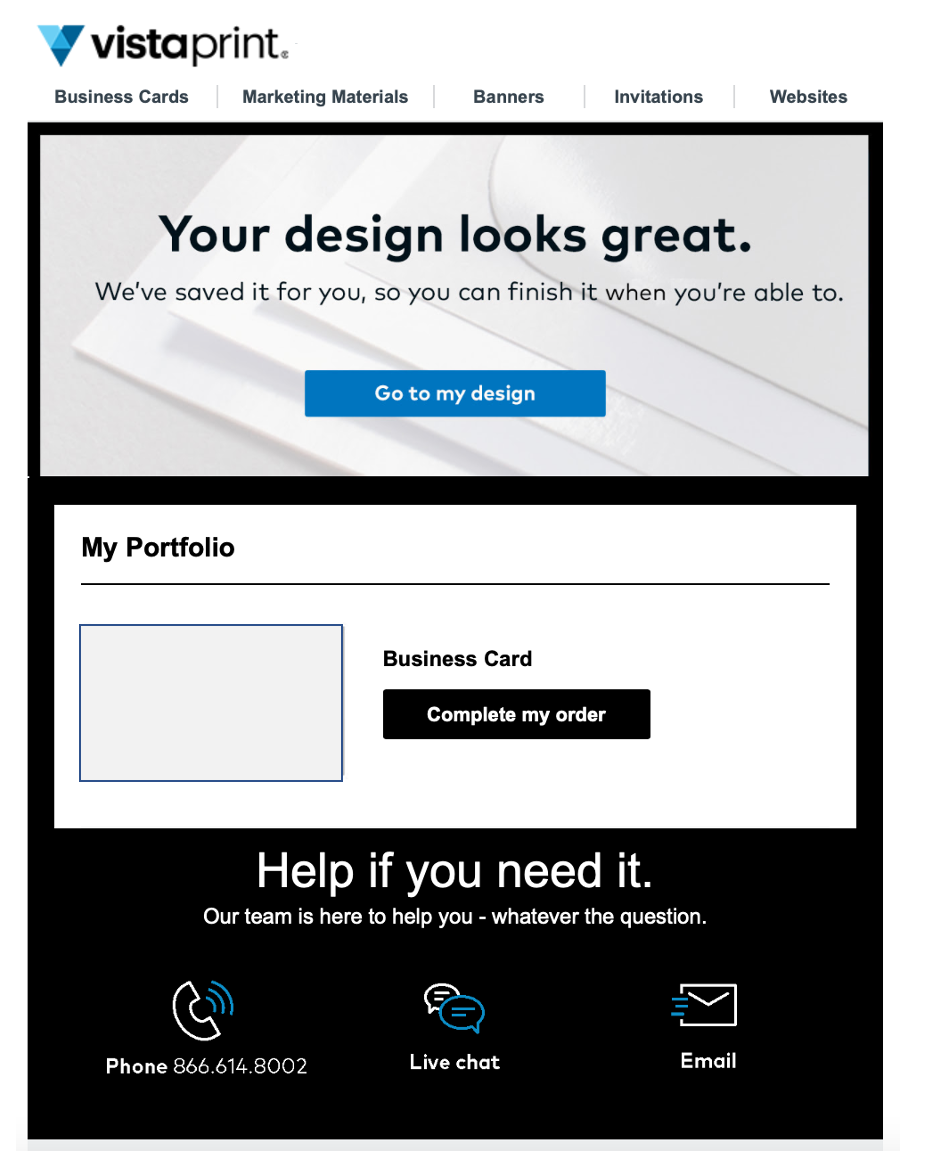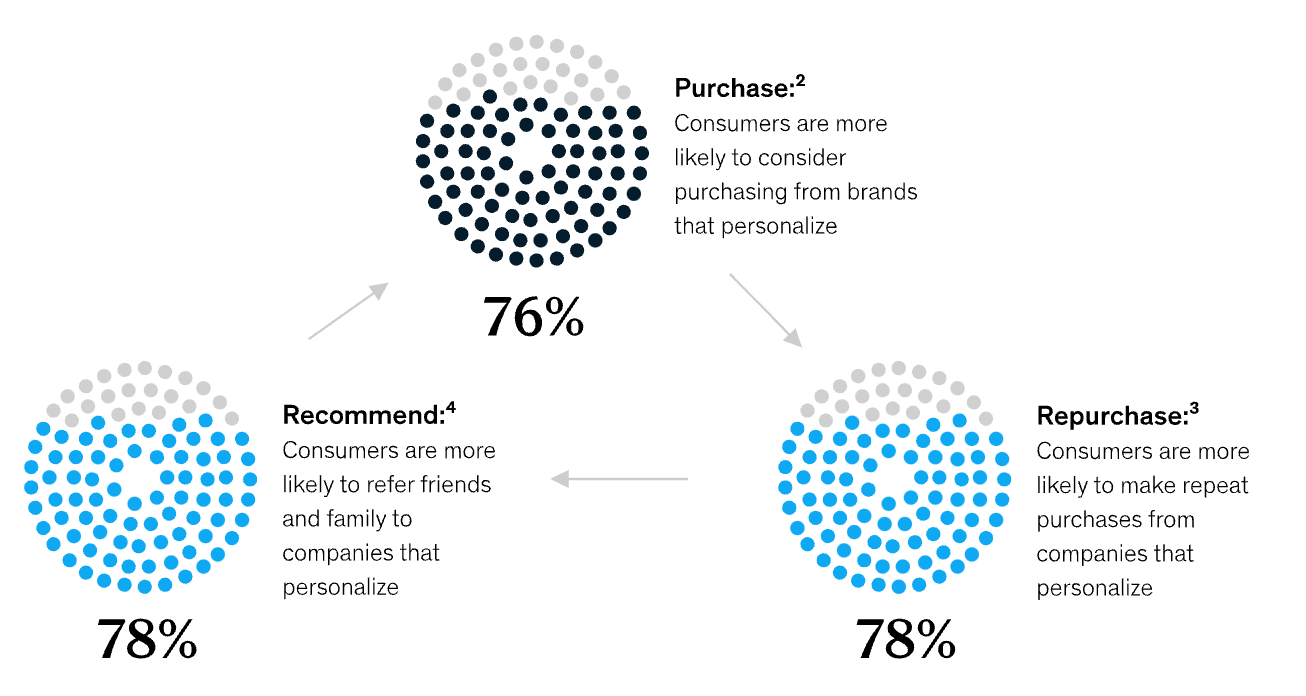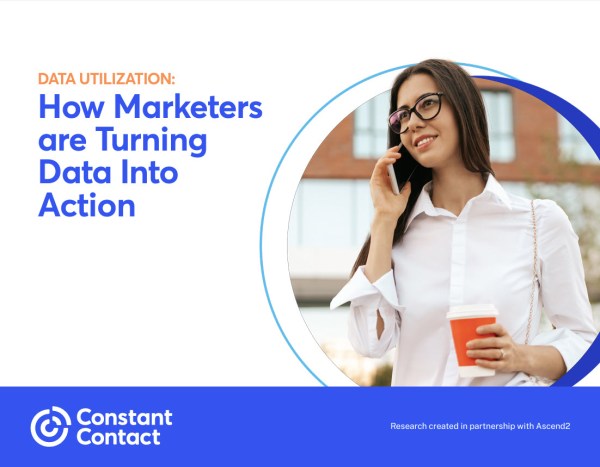Customers are bombarded with advertisements everywhere they look. On an average day, they might see email ads, social media ads, search engine ads, and TV ads — all before lunch.

The challenge for brands is to cut through the noise and actually connect with customers. So, how do you make your ads stand out from the dozens of others your target audience sees daily? The answer is personalized marketing.
Let’s break down what exactly personalized marketing is and how you can use it to help your business grow.
What is personalized marketing?
Personalized marketing is an advertising strategy that involves sending customized, targeted messages to customers by using data about their habits, interests, and purchasing patterns.
Traditional marketing takes a one-size-fits-all approach to communicating with customers. With personalized marketing, you tailor each message to the customer who sees it. It’s a crucial aspect of digital marketing, especially for channels like email marketing.
Why personalized marketing is important for modern businesses
The majority of customers now expect brands to personalize their interactions. By tailoring your marketing efforts to each customer’s needs, you can position your brand as more reliable, more relatable, and more consistent in meeting those needs.
Implementing personalized marketing strategies will ensure you keep up with and even surpass competitors using broad, impersonal marketing messages. You’ll build stronger relationships with customers and get more out of your marketing campaigns.
Benefits of personalized marketing
Personalizing your marketing efforts can lead to a variety of positive changes.
Improved customer engagement and loyalty
Personalizing your marketing messages will increase customers’ engagement with your ads and your brand in general. The more targeted and personalized your ads are, the more likely they are to catch the customer’s attention. Showing them ads for products they’ve already viewed, for example, can be the tipping point for convincing an undecided potential buyer.
Personalized marketing can also inspire greater brand loyalty. Sending customized messages to customers shows them you see them as more than just a potential sale, encouraging them to stick with your brand. Existing customers tend to spend more than new customers, so it’s worthwhile to boost brand loyalty with personalized ads.
Enhanced customer experience
The feeling of being understood by a brand isn’t just about emotional connection either — it’s also about making a more convenient, comfortable shopping experience.
When customers are able to get what they want quickly and easily, they’re more likely to come away with a positive impression of your company. They’re also more likely to keep coming back.
Personalized marketing based on data such as previous purchases, demographics, interests, and company interactions can allow you to show customers ads for the products they’re most likely to purchase.
Increased conversion rates and sales
Most marketing professionals agree that personalization leads to increased conversion rates.
Customers are more likely to engage with customized ads and complete sales or other conversions from those ads. McKinsey Digital’s findings suggest that companies can boost revenue by up to 15% by implementing personalized marketing.
Effectiveness across sectors
Personalized marketing campaigns are effective for both B2C and B2B brands. In either sector, personalizing your marketing messages will help you connect with customers, improve engagement, and drive conversions.
Examples of personalized marketing
There are many different ways to implement a personalized marketing strategy. Here are a few examples you can use as inspiration.
Targeted emails
Targeted email messages are some of the best examples of personalized marketing because they’re so adaptable. Something as simple as customizing each email subject line with the customer’s name rather than a generic greeting can make a big difference.
You can implement customization in many other ways in emails, too. For example, you can send custom offers, cart abandonment emails, or unique product recommendations in your personalized email messages.

Product recommendations
Rather than promoting the same products to every customer regardless of their interests, why not tailor your recommendations to each person? Personalized product recommendations are more relevant and thus more likely to engage customers.
Every customer has different interests, needs, and purchase histories, so it makes sense to customize your recommendations for each person.
Integrate your customer data with your marketing efforts to provide relevant, personal recommendations for each customer.
Social media marketing
You can also personalize your marketing campaigns on social media. For example, you can create ad campaigns showing sponsored messages and target them to customers with items waiting in their carts. This kind of personalized message is better equipped to catch social media users’ attention than generic ads and may prompt them to complete their purchases.
Challenges in personalized marketing
Any marketing strategy has challenges, personalized marketing included. The right approach, however, can help you overcome them.
Be aware of the following potential problems ahead of time so you’re equipped to deal with them effectively if they come up.
Overcoming data privacy concerns and regulations
The only way to customize your marketing efforts is to collect and store data about customers and website visitors. The more data you have access to, the better you can customize your ads.
However, you must be mindful of data privacy regulations, such as the European Union’s General Data Protection Regulation (GDPR) and California’s Privacy Rights Act (CPRA). You also need to ensure that your approach to data collection and use doesn’t violate customers’ trust.
The key to managing these concerns and regulations is getting approval from customers before collecting and using their data. Being as transparent as possible helps you to stay compliant and build trust with your customers. According to Business Wire, most people are willing to share their data with brands for personalized interactions and incentives, so don’t hesitate to ask.
Addressing the complexity of data analysis and segmentation
Having access to more data will improve your personalization efforts, but it will also make data analytics and customer segmentation more difficult. It’s easy to get overwhelmed by the quantity of data you’re working with.
The solution is to integrate your data collection and analysis with your marketing platforms. To do so, you’ll need the right tools. That means using powerful customer relationship management (CRM) software and staying on top of all the latest developments in marketing tech.
Marketing automation tools pair well with personalization, so be sure to use both.
Marketing personalization trends and statistics to watch
In recent years, marketers have placed a growing emphasis on marketing personalization. The current trend is toward implementing customization across multiple channels like email marketing, social, and search.
Key personalized marketing statistics
The following are some statistics that highlight the value of personalized marketing:
- Marketing personalization significantly increases 68% of customers‘ satisfaction with brands.
- The majority of customers are more likely to consider purchasing from brands that use personalization.

Future predictions for personalization in marketing
Going forward, expect to see brands put even more emphasis on personalization as a way to stand out. There will probably be more focus on artificial intelligence (AI) and automation to make these customization efforts easier.
You may also notice brands adjusting their privacy policies in light of new data privacy regulations affecting customized marketing.
Steps for getting started with personalized marketing
When you’re ready to dive in, follow these steps to implement your own personalized marketing efforts.
Planning and developing a strategy
Your first step is deciding what kind of strategy you want to use. Do you want to personalize email marketing campaigns, social media marketing, search engine ads, or some combination of these marketing channels? Reviewing customer data about where and how most customers interact with your brand can help you decide.
You should also set clear goals for your marketing personalization efforts. Personalization geared toward improving brand loyalty will look different from strategies focused on bringing in new customers.
Identifying and segmenting target audiences
Next, you need to identify your target audiences and segment them.
Think about who your target customers are, what they need, and what interests them. Once you understand your target audiences, you can begin segmenting them into smaller groups with shared characteristics. Some of these categories might include:
- Age
- Gender
- Profession
- Location
- Marital status
- Previous purchase history
- Brand interactions
- Interests
- Lifestyle
Developing campaigns tailored to customer personas
The third step is to develop tailored campaigns based on these segmented customer personas.
For example, you might create messages specifically for customers above 40 years old in the high-income bracket promoting your more expensive range of products. Alternatively, you could offer coupons or limited-time deals to people who left items in their carts.
There is no limit to the different customer personas and customized messages you can create.
Tools and technology for effective personalization
Instead of trying to manually manage all this data and information, rely on technology to aid your personalization efforts.
There are lots of personalized marketing tools and platforms available to help you. These are just a few you’ll want in your toolkit:
- Email marketing personalization: Email is one of the most important places to reach customers. Platforms like Constant Contact help you seamlessly personalize your emails with segmentation features, tailored greetings, and automated messages.
- Website personalization: Website personalization tools, like Wix and Squarespace allow you to personalize landing pages and product recommendations on your site.
- Social media personalization: Tools from social media platforms themselves, as well as third-party tools, assist with personalizing social media ads by digging deeper into audience demographics. Try creating personalized ads on Facebook and Instagram with Constant Contact.
Choose marketing software that integrates with your existing tools, like your CRM software and any data analysis platforms you use. Customer data platforms (CDPs) and data management systems can help you organize all the data you collect. That way, you’ll know your data is secure and accessible for your customization efforts.
Implementing personalized marketing
Starting personalized marketing may seem intimidating, but it’s more doable than it sounds. Apply traditional marketing logic to this more modern marketing approach.
The 4 Ps of personalized marketing
The traditional four Ps of marketing are place, product, price, and promotion. All four also apply to personalization. You need a couple of things to successfully personalize your marketing messages:
- Relevant messaging & product offerings
- Appropriate marketing channels
- Affordable pricing options
When launching a personalized marketing campaign, focus on promotion. Think of your personalized messages as a one-on-one conversation to persuade the customer to buy your product or service.
The role of A/B testing and refinement
Don’t worry if you don’t get your personalized ads right immediately. A/B testing your ads will help you determine which messages work best.
You can send out two similar yet slightly different ads to limited audiences and see how they respond to them both. A/B testing is a great way to continually refine your personalization efforts throughout a campaign.
Measuring the success of personalized marketing
After your personalized marketing campaigns are underway, you need a way to make sure they’re doing well. Be sure to collect data on every part of the campaign and keep an eye on these key performance indicators:
- Views/impressions
- Conversions
- Click-through rate (CTR)
- Sales
- Return on investment (ROI)
In personalized email marketing, specifically, you also have to consider metrics like the open rate, deliverability rate, and unsubscribe rate. Choose your metrics based on the marketing channels you’re using, and track how these metrics change over time.
Read now: Email Marketing Metrics: Measuring Success Beyond Open Rate
Get more out of your marketing with personalization
Personalized marketing is an essential strategy for connecting with customers and driving conversions. Customers expect personalization, so utilizing this strategy will deliver the best customer experience possible. Implement personalized marketing across channels like email marketing, social media, SMS, search, and more.
Continue to explore new personalization opportunities and strategies as they arise. New customer data and personalization tools may open up new avenues for providing tailored marketing experiences.





